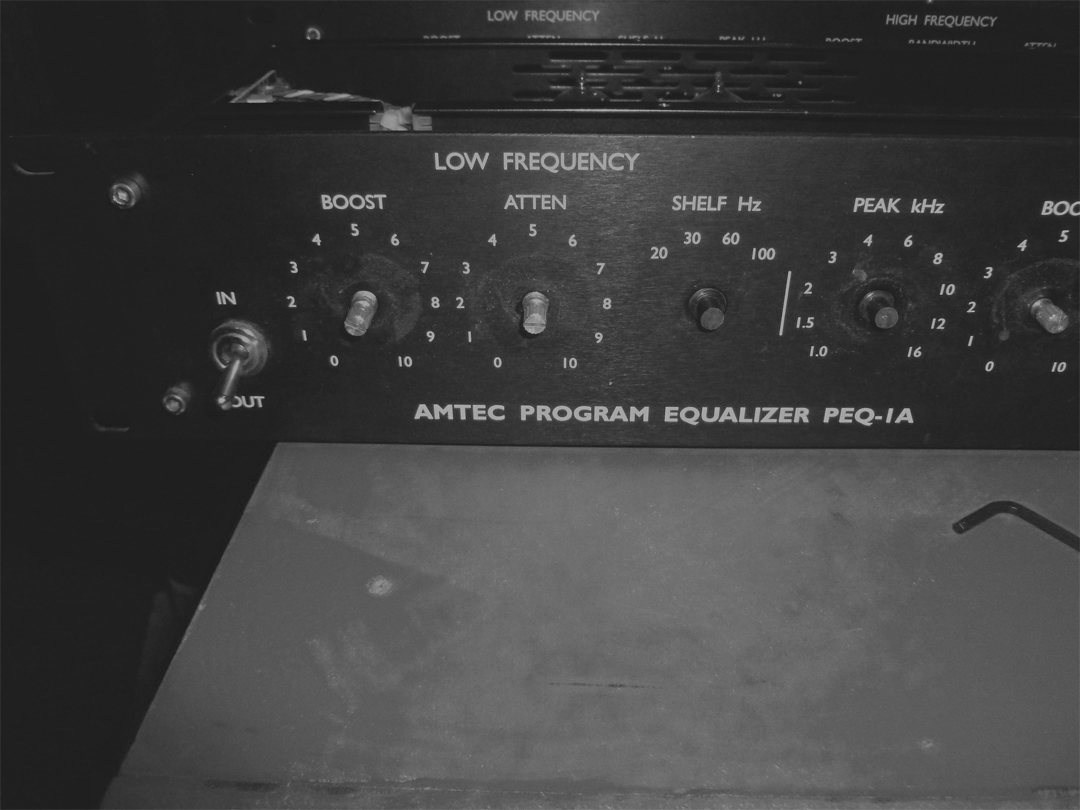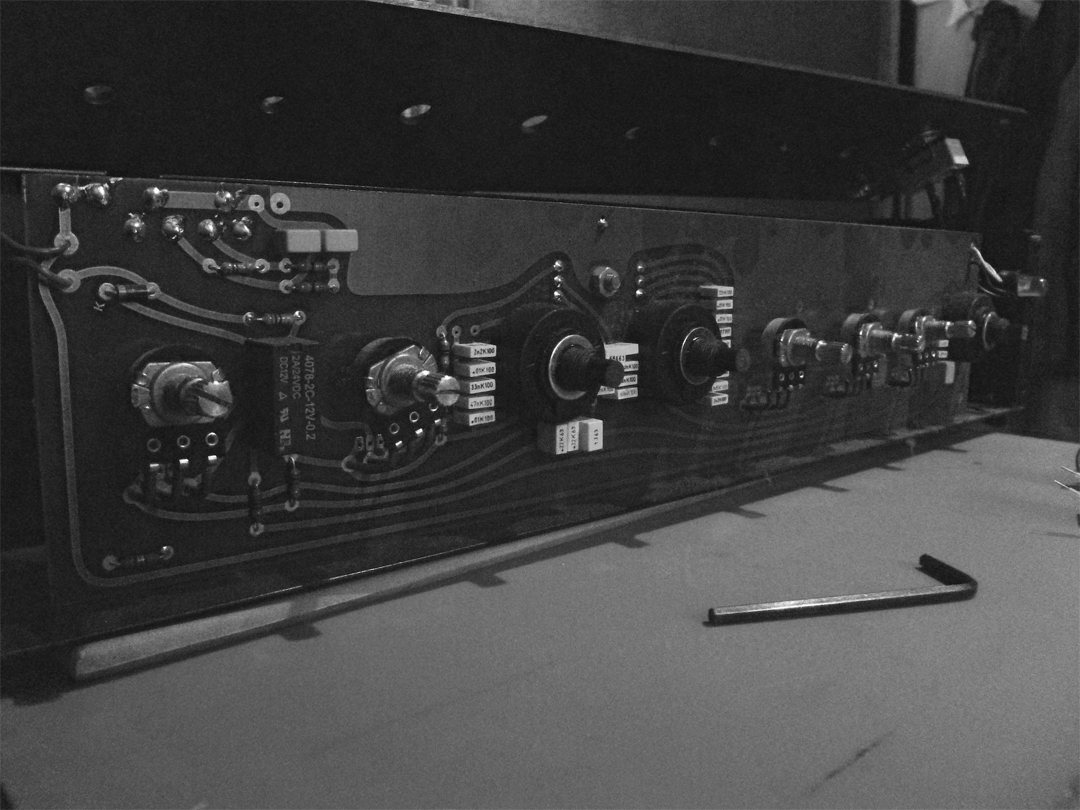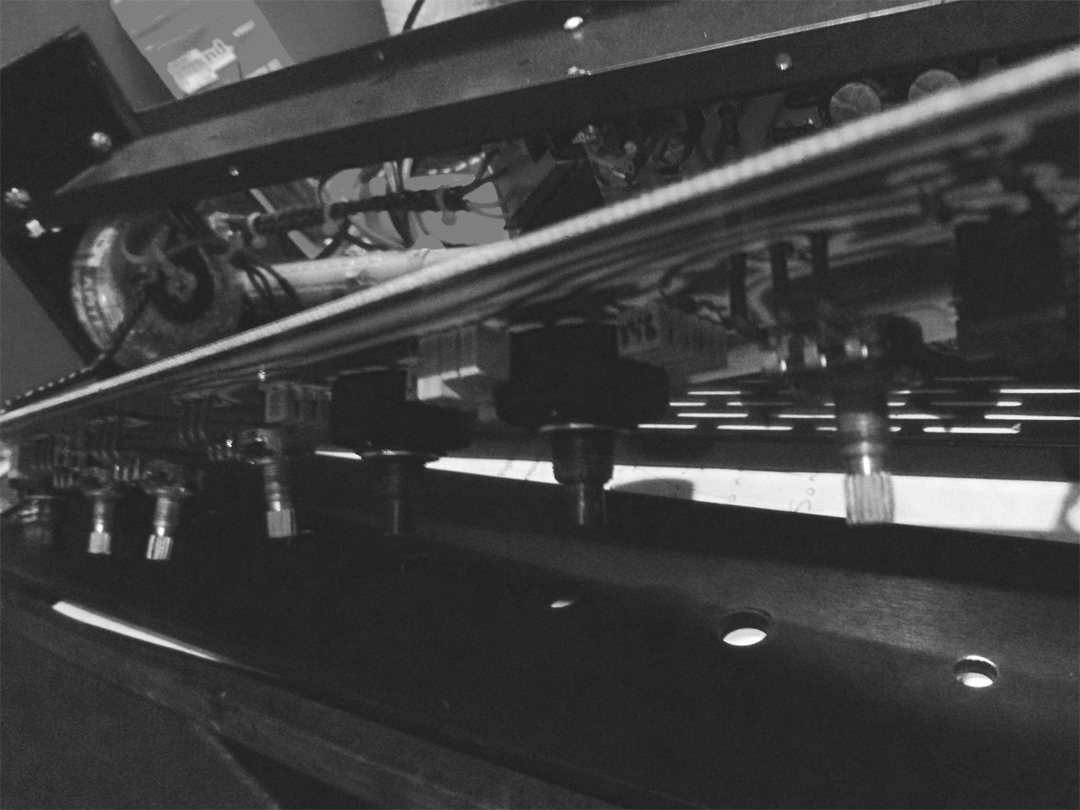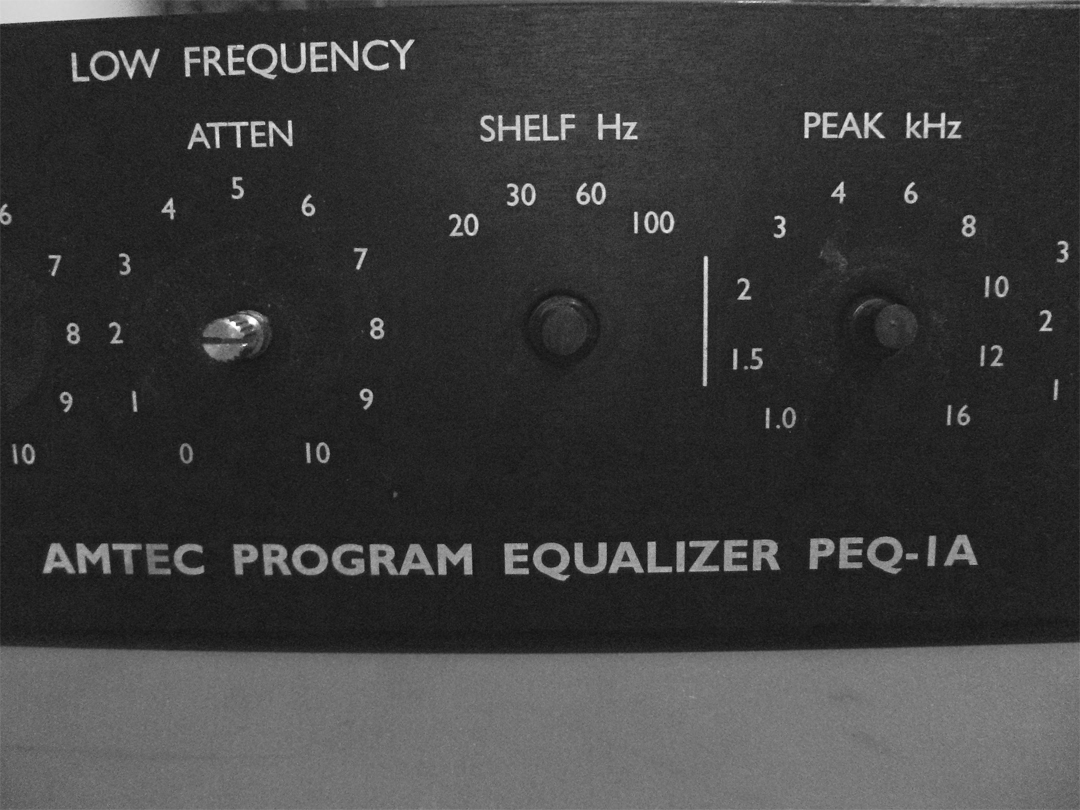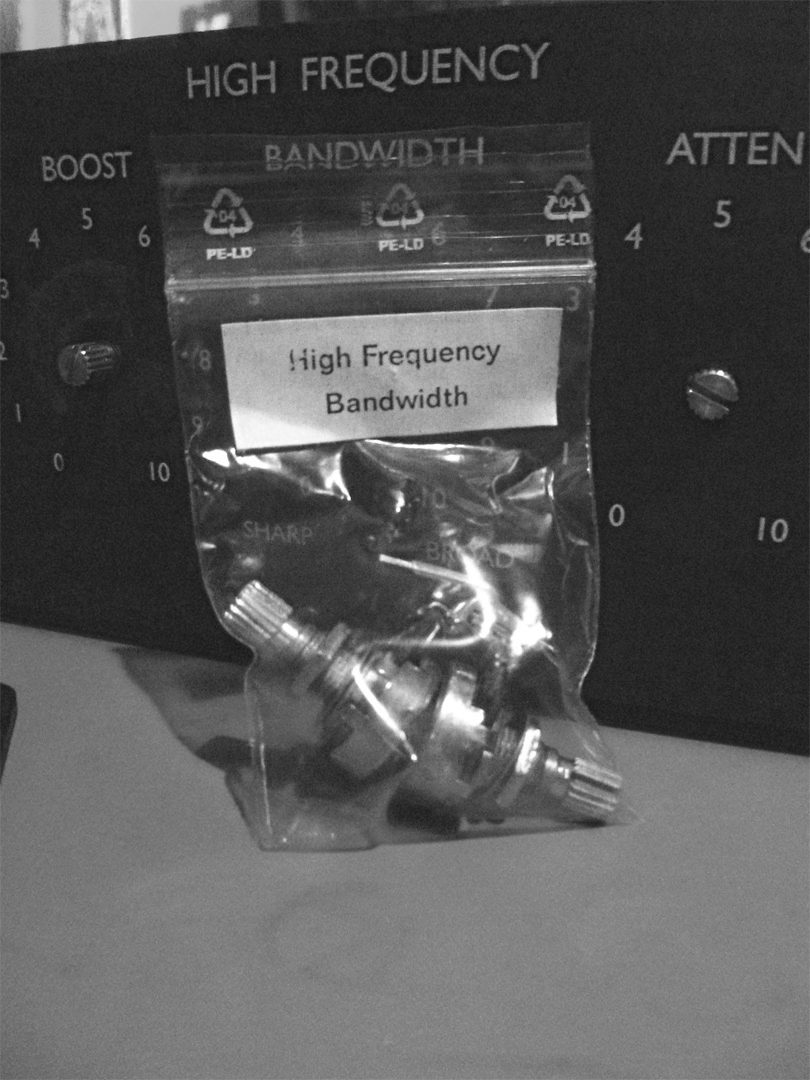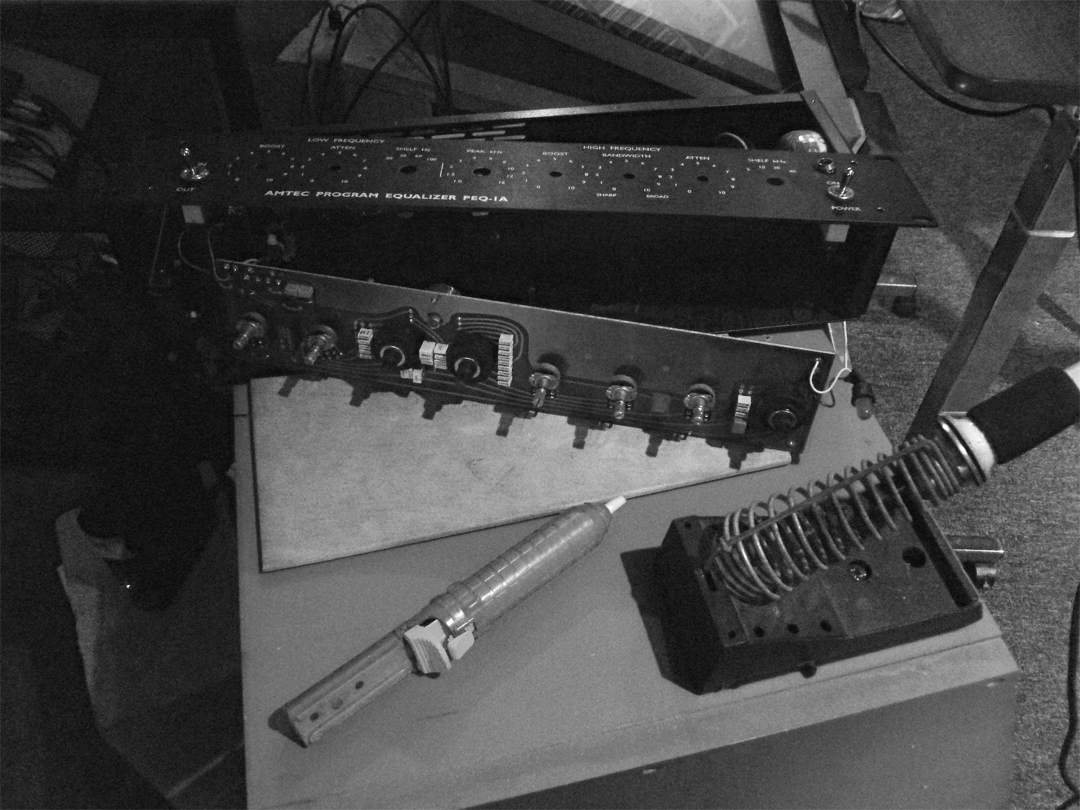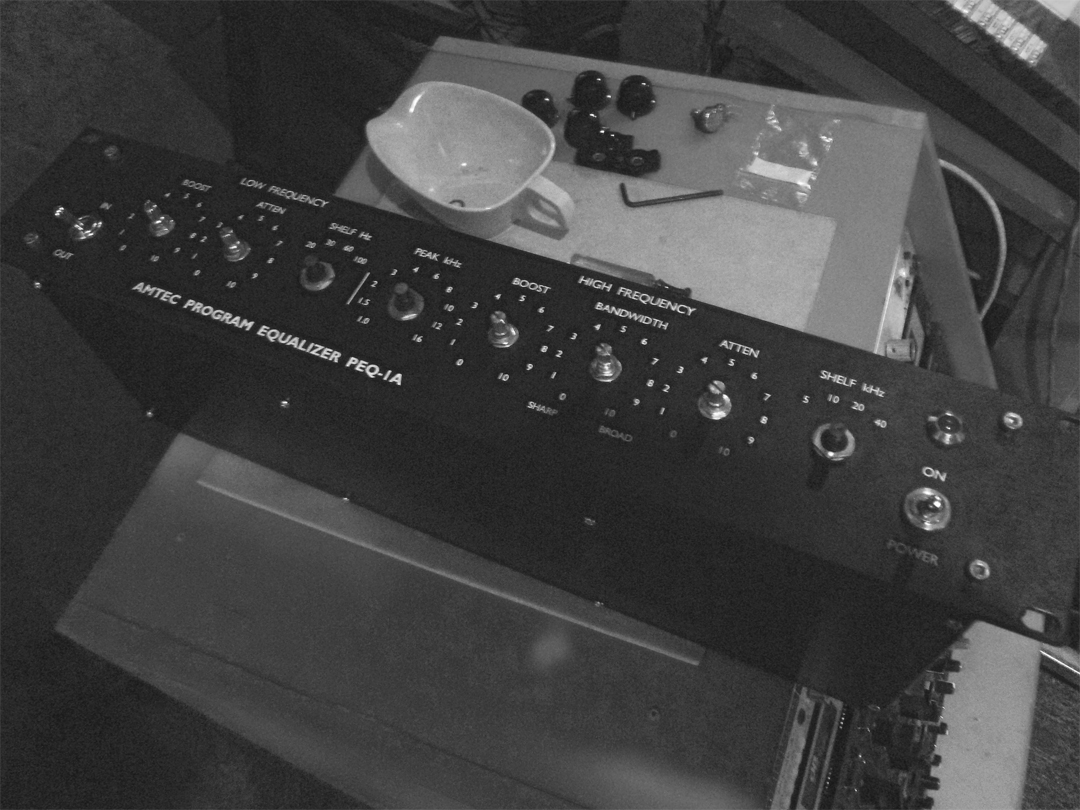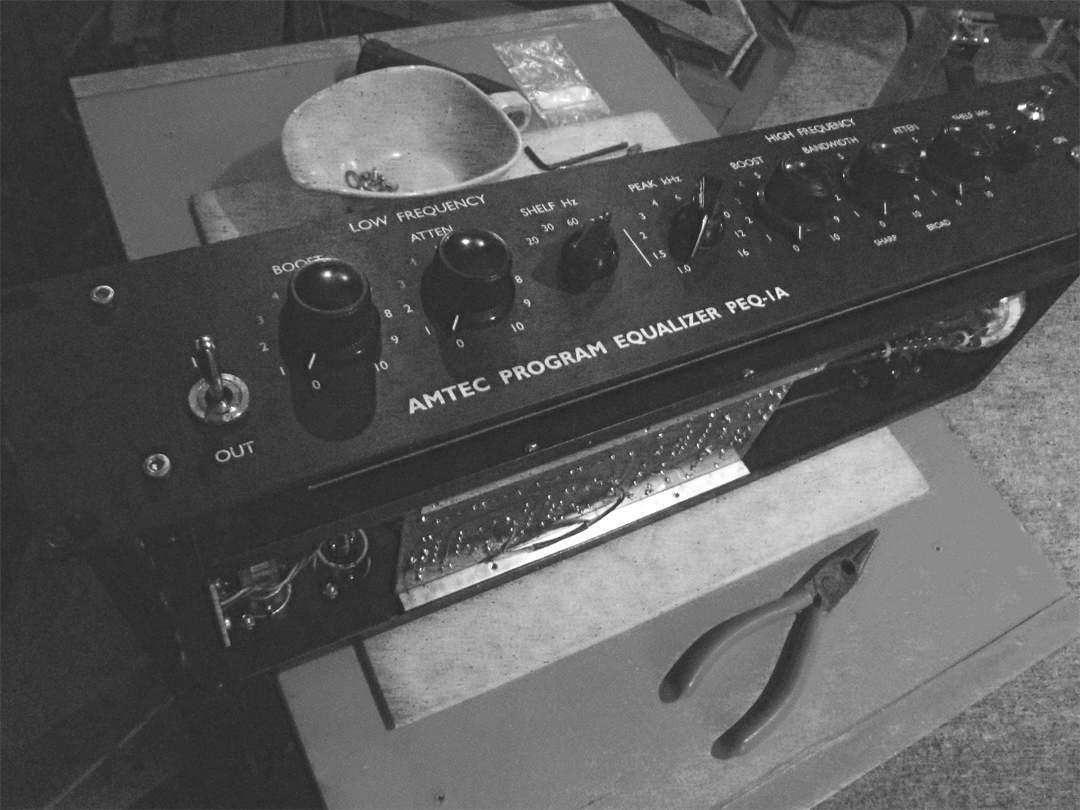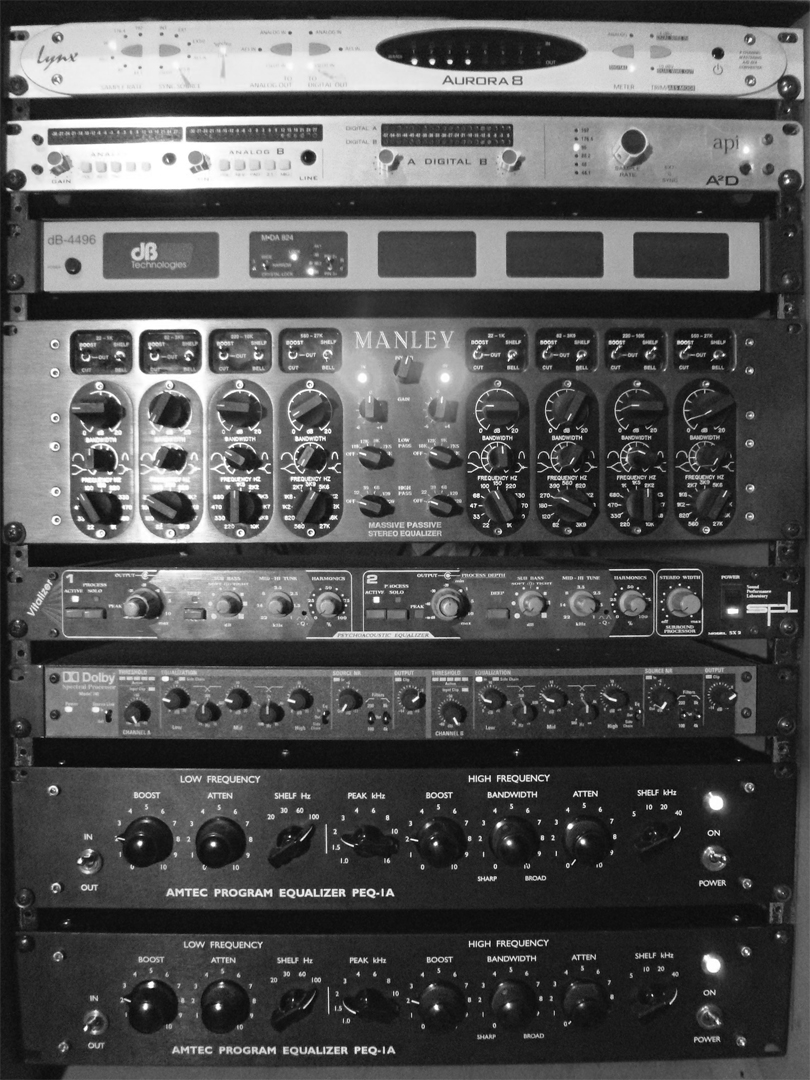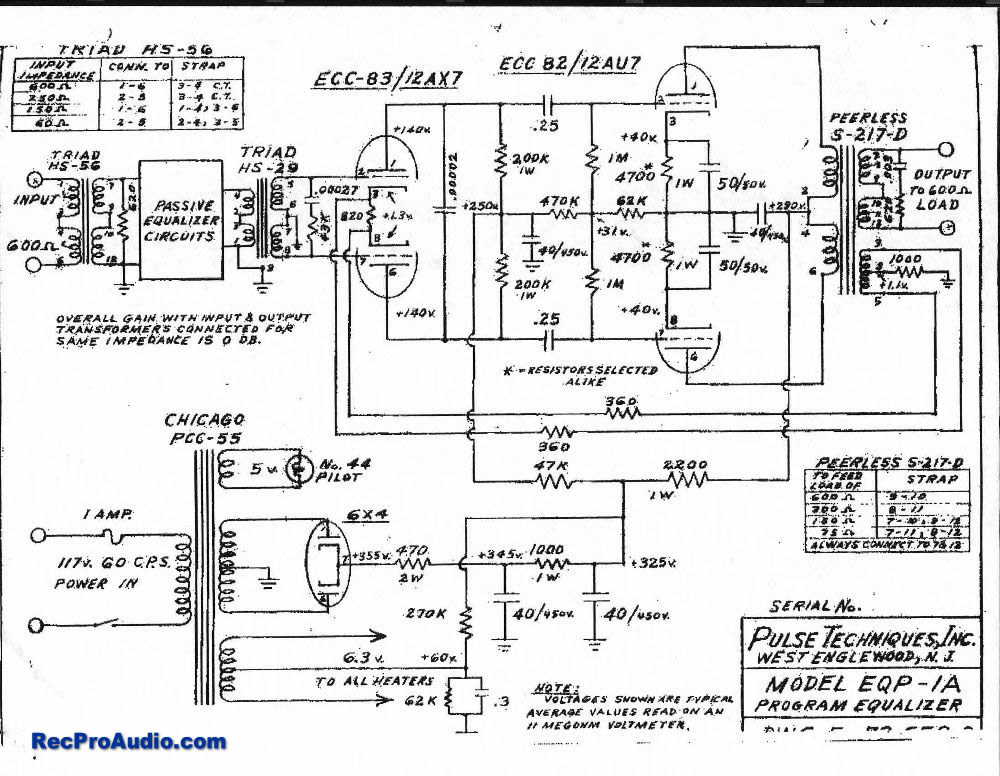::: There's more to the studio than instruments :::
Every end of year we try to allot a few days to do tech work at the studio. This includes basic cleaning but also wiring changes, gear upgrades, and basic maintenance on gear that gets used all year long. This year there was only one piece of gear that needed immediate attention. It was a pair of Pultec equalizers made by Amtec. Pultec is a shortened version of Pulse Techniques, the company that made all those classy old eq's with the big bakelite knobs. More than that though, Pultec came to represent a style of equalizer design that is classic and still in demand today. The basic idea is that each channel of eq would have a few basic filters placed at musical points in the audio spectrum. For instance the pair we use has a low shelf that can be set at 100, 60, 30, 20hz coupled with a high pass filter, a mid frequency bell that has a range of frequencies between 1000 and 20000hz, and a low pass filter with settings at 5, 10, 20, and 40khz. This allows us to add thickness to a mix or instrument focussed around the bass guitar, kick drum, or even lower while adding a focussed point or wide push in the mids or highs while potentially mellowing the super high frequencies.
It seems limited in features when compared to a fully parametric or digital equalizer, but where this design shines is in the sound it achieves.
Pultec eqs, were originally designed and used to add life and musicality to a recording that needed help. They offer exceptionally natural equalization for highest and lowest frequencies and a unique sound. They achieve this by the use of multiple audio transformers in the signal path and passive methods of filtering or eqing. Passive equalization is achieved by using inductors ( coils ), resistors, and capacitors to affect the sound to avoid active amplifiers that tend to add more distortion to the signal. Furthermore the output amplifier is based on two classic amplifier tubes which adds back gain that is lost in the passive equalizer stage and also adds level of harmonic richness to the output.
All this gives a very smooth, almost velvety sound. This is the perfect device for processing individual instruments and the whole mix or even master!
In the gallery you can see the old schematic for a Pultec style eq. Clearly noted in the upper left is the passive equalizer section. This is shown as a block because at the time they were using proprietary designs so they 'potted' them. This means that they seal an important part of a circuit in a casing so no one can see what is inside. Below the eq section on the left is the power supply. This is to power the make up gain section of the eq that is on the upper right with the tube amplifiers. Lastly there is an output transformer ( also see one at the input ). Part of the great sound of these boxes is the sheer amount of iron used in each channel, that in combination with the passive eq design and simple tube amplifier add up to a big deep sound that is full of life.
On to the work, I noticed the mid frequency bell bandwidth potentiometer on one of our Amtec's was crunchy feeling. The knobs are big but the pots are somewhat delicate. Luckily the company is very nice and sent me a new matched pair of these at no charge!
:::
:::

